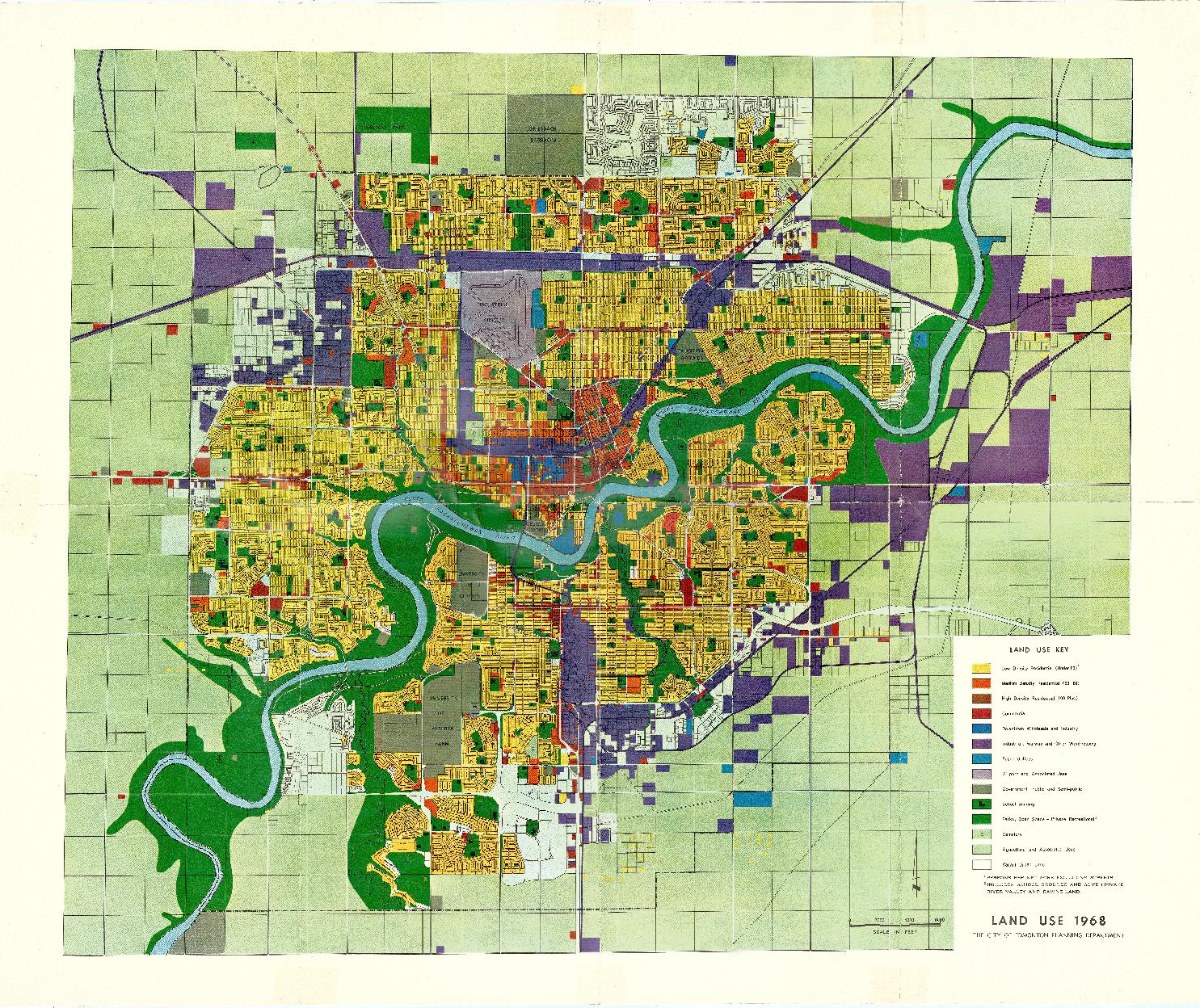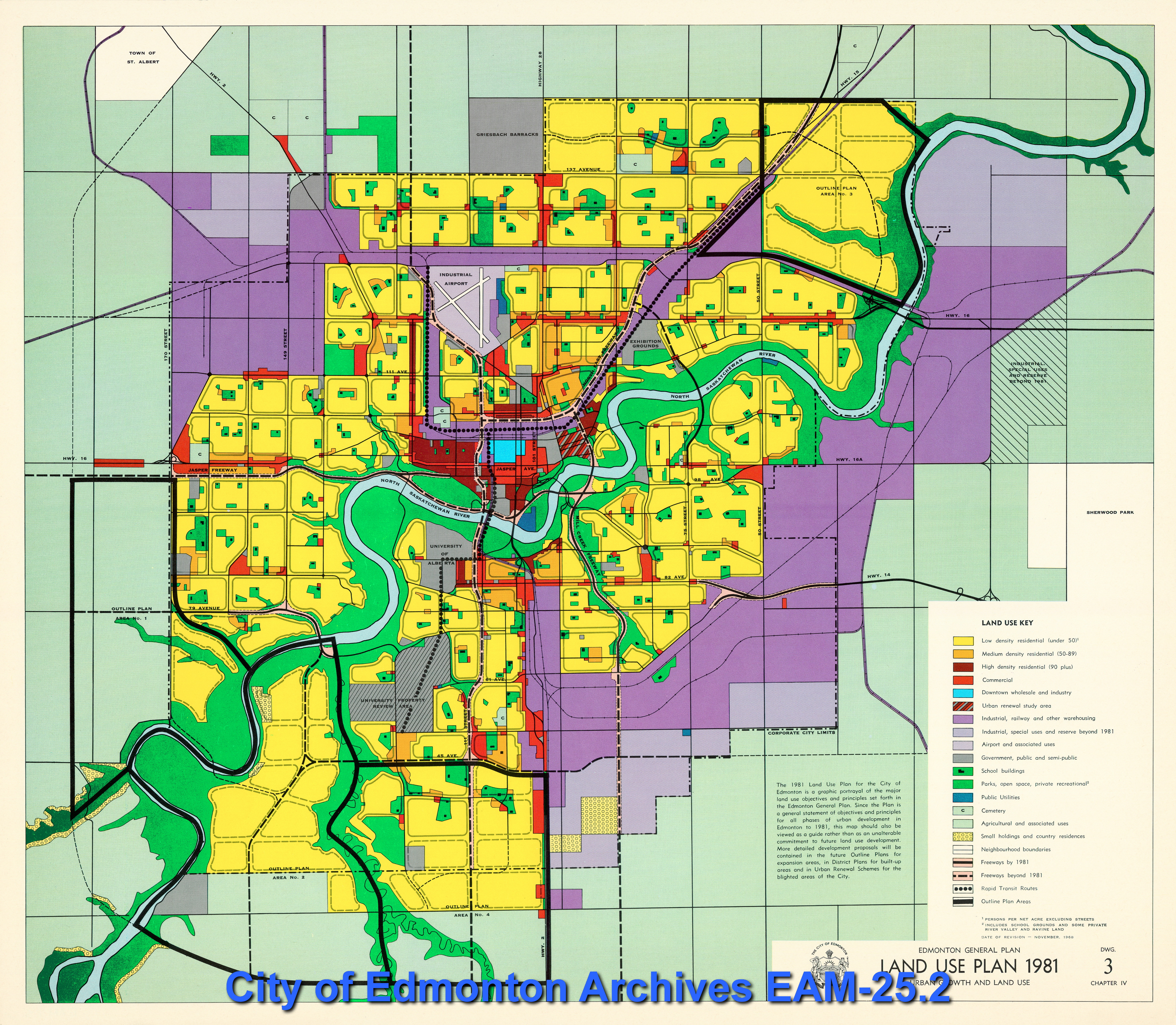The City of Edmonton is in the midst of rewriting its Zoning Bylaw.
It’s a huge undertaking, but the Zoning Bylaw Renewal process is the most powerful tool we have for building the city we need to be in the 21st century.
The zoning bylaw is the set of regulations guiding land-use in the City. Zoning sets out what types of uses and what types of development are expected and permitted in a given area. In simple terms, it’s what prevents oil refineries from going up next to schools. In the real world, zoning has often been used as a tool to segregate communities, restrict more diverse housing options, and build communities without amenities or public transportation.
Over time, the decisions we make about how to regulate land-use have significant impacts on social inclusion, public health and safety, affordability, access to public services, infrastructure demands, transportation, economic development and environmental impact.

Do you want a grocery store in your neighbourhood? Do you want the local coffee shop to stay in business? Your local school to stay open? Your public services to be high quality? Your taxes to be reasonable? Maybe you’d like to build a suite for a parent or child on your property. Or you’d like to be able to take a quick and efficient bus to work.
All of these hopes depend on land-use policy and zoning. The way our communities are designed — to bring people together, or keep them apart — is dependent on how we use our land.
Our current zoning bylaw was first drafted in the 1960s, meaning its fundamental structure is still tied to a vision of Edmonton from over 50 years ago. Our population, demographics, land-area, economics and technology have all changed dramatically in that time. The challenges we face as a City, provincially, nationally and globally are also dramatically different.
At this point, Edmonton’s zoning bylaw is cumbersome, difficult to navigate and understand, and often in conflict with itself. The most innovative, forward-thinking development in our City, often runs contrary to the regulations. Some small businesses need to go through rezoning simply to open their doors, without any changes to the building. This often makes it prohibitive to build more diverse and affordable housing, more complete communities, new local businesses, and needed neighbourhood amenities. Our zoning bylaw does not reflect the goals of our City Plan, the values of our communities, or the practical realities of a diverse and growing ciity.
Land-use policy is the single most powerful tool that our City has to create a more economically, socially, and environmentally sustainable place. It is essential that this set of tools is relevant to our current context, and adaptable to a rapidly changing world. The new zoning bylaw sets the groundwork for incremental, but more strategic, generational change.

It’s hard to summarize in a few sentences: your experience of the new bylaws will depend a lot on what sort of neighbourhood you live in. But generally speaking, buildings will be allowed to be a little bit taller and a little bit closer together. Mixed-use developments, where businesses are allowed to be below or beside residences, will be a bit more common.
For a broad overview, the City of Edmonton has an explanation of the new zones and some of the key ways the new bylaw is different on its website. They also offer a tool to help you figure out which zones will apply to your neighbourhood. Councillors Ashley Salvador and Erin Rutherford have also put together deeper considerations of what zoning might mean for their constituents.
An important thing to remember, though, is that these changes are evolutionary, not revolutionary. Though they’re a necessary step toward building the city we want, that will be a long and slow process.